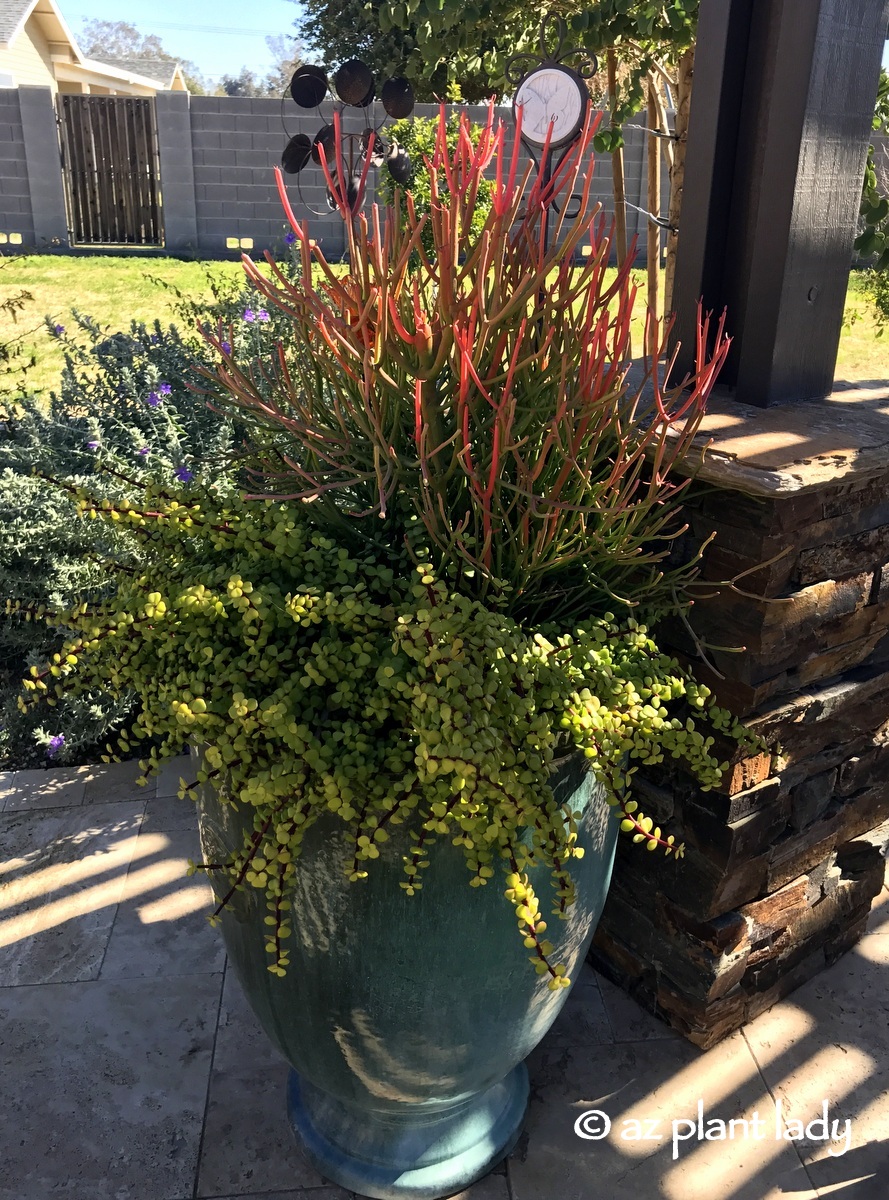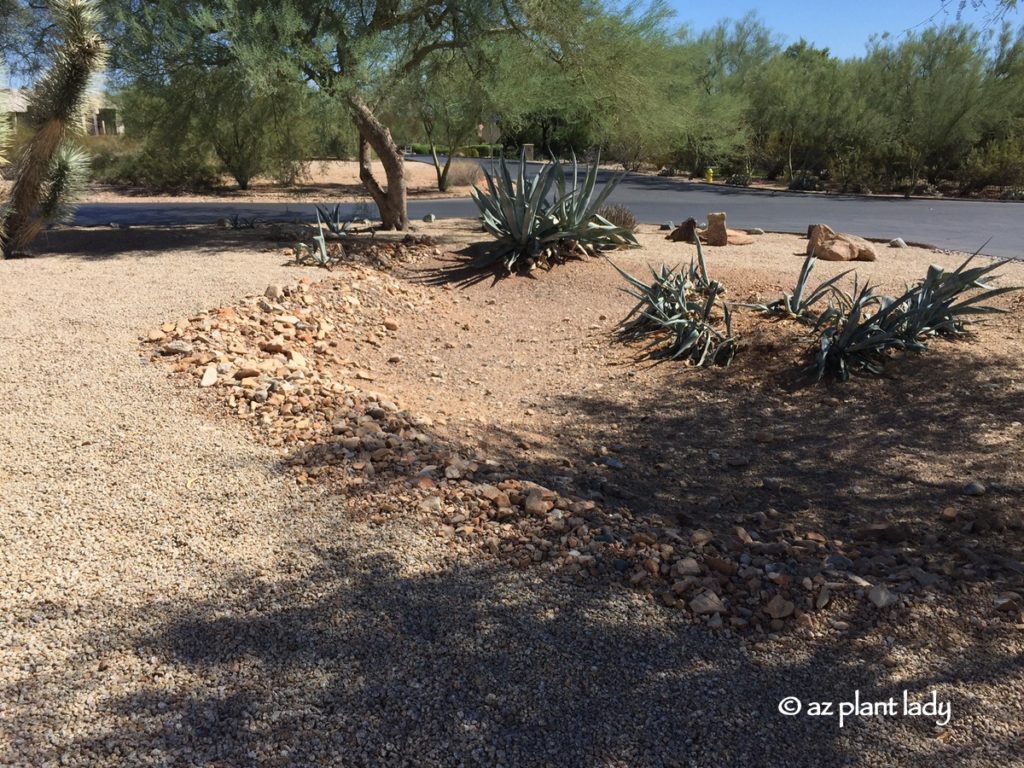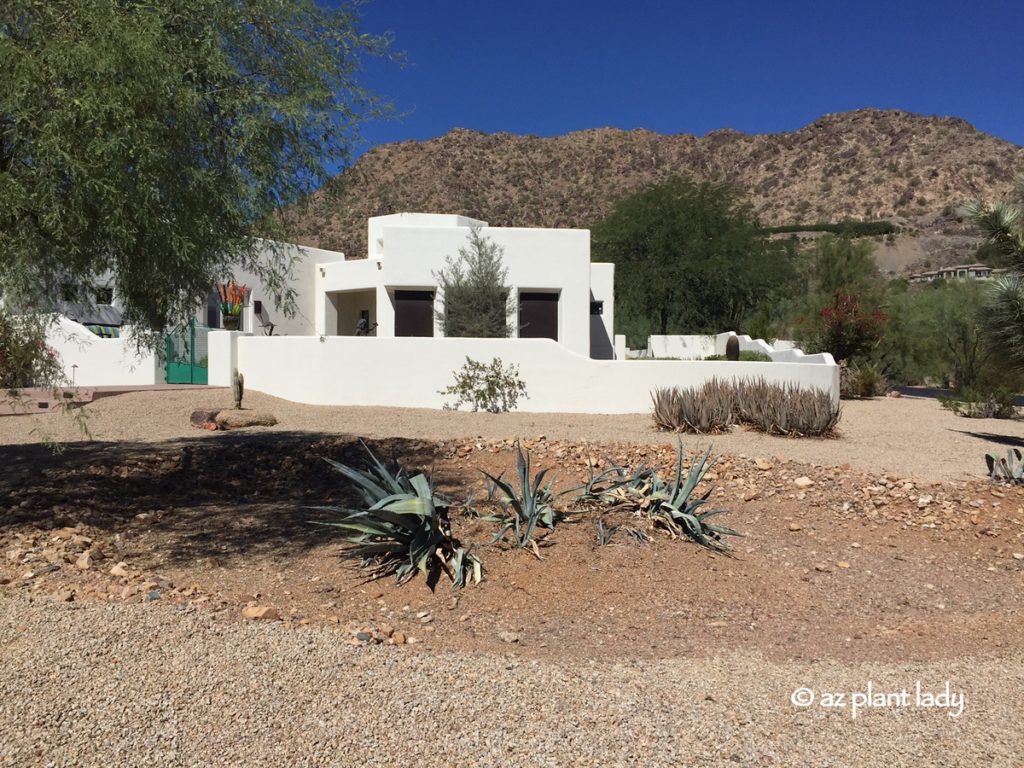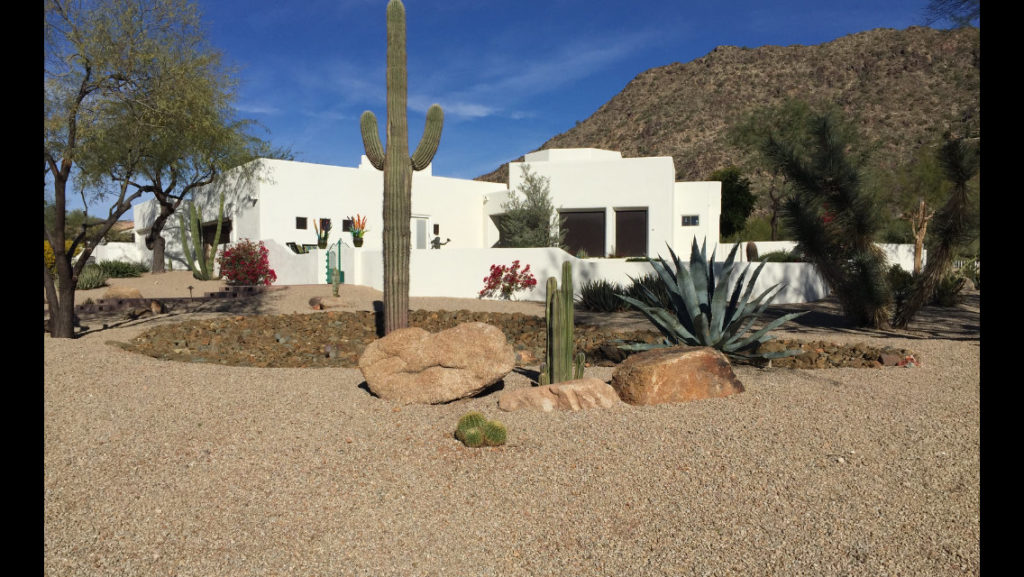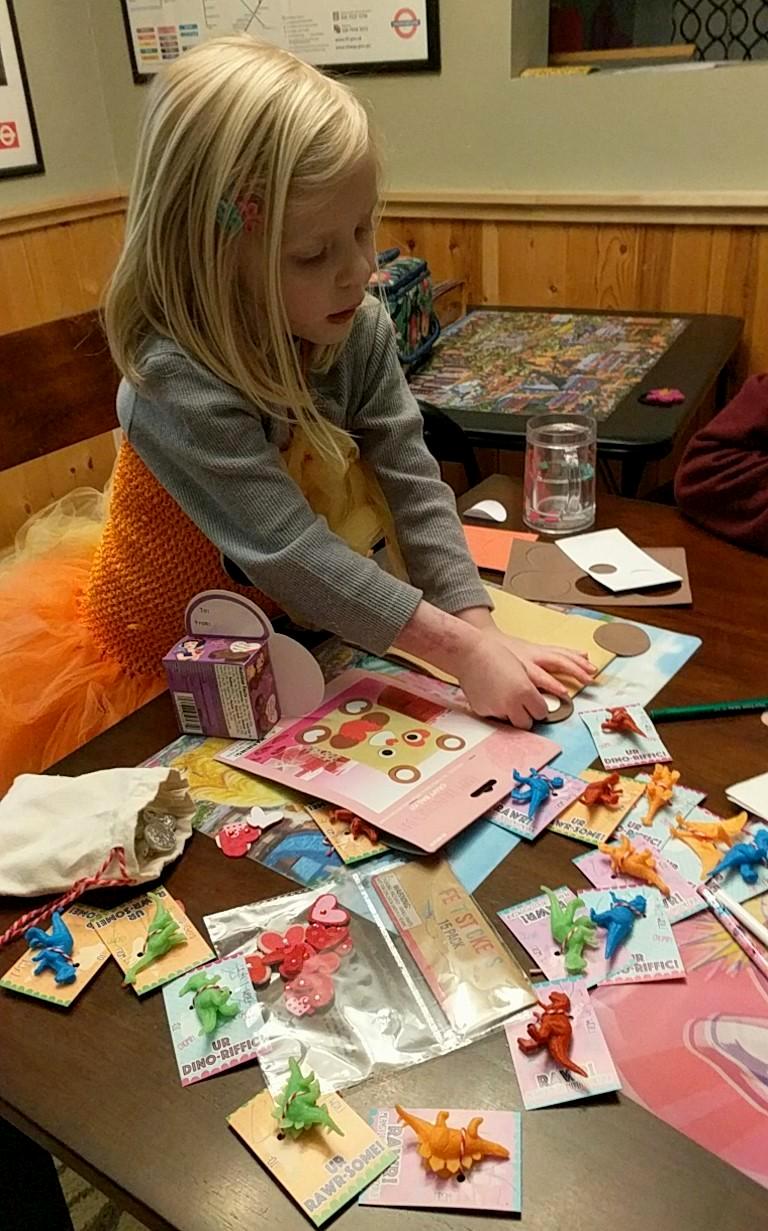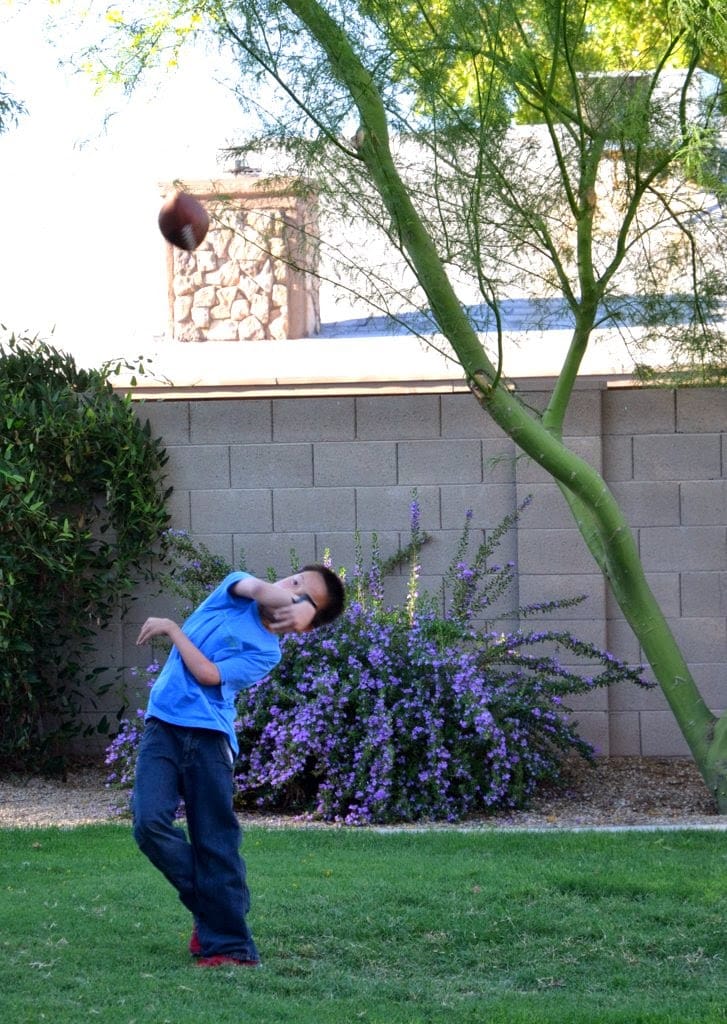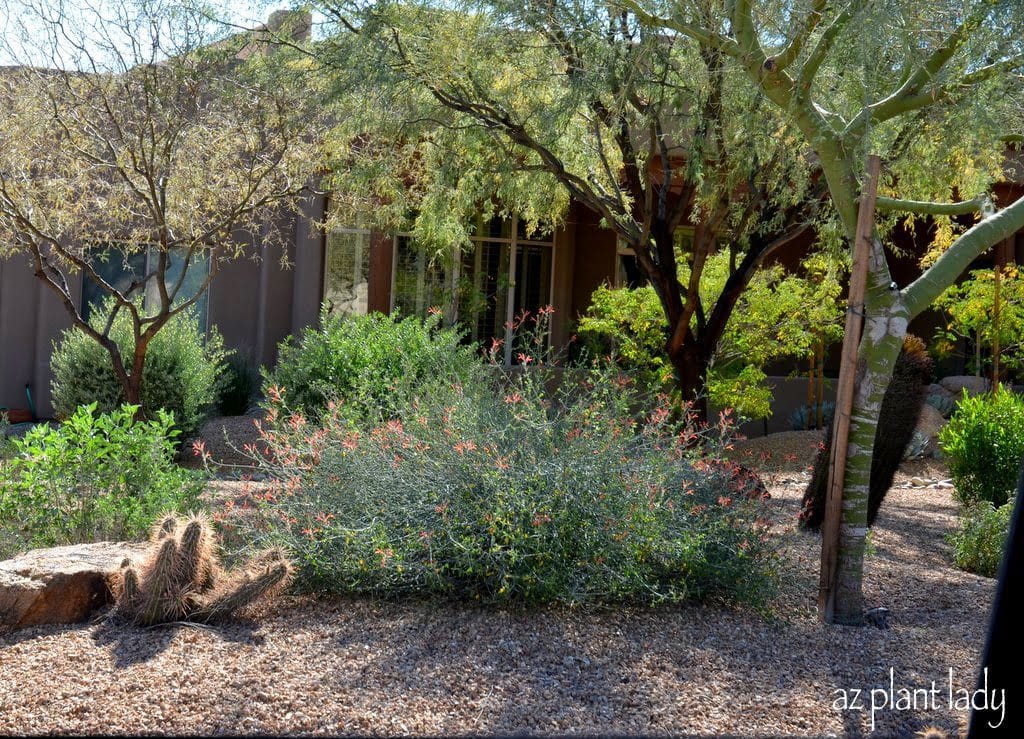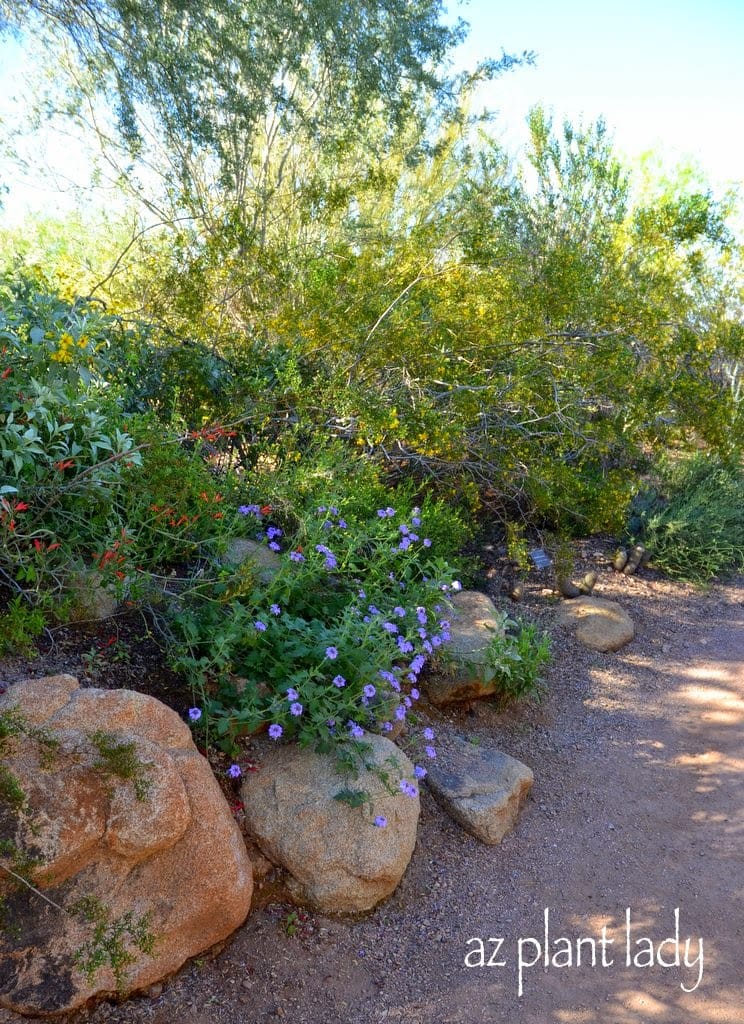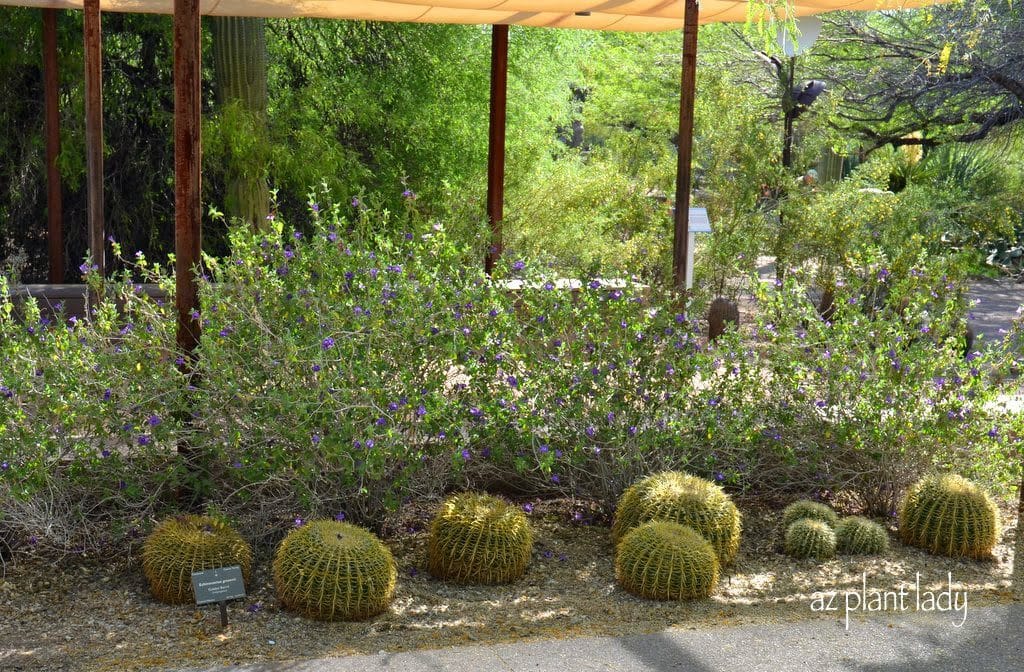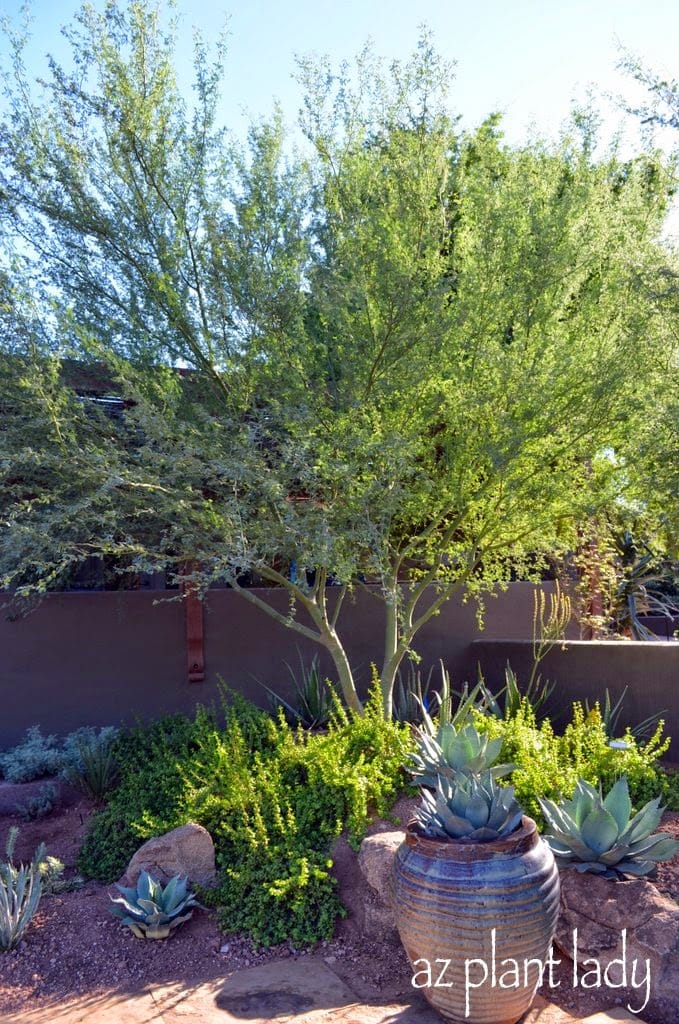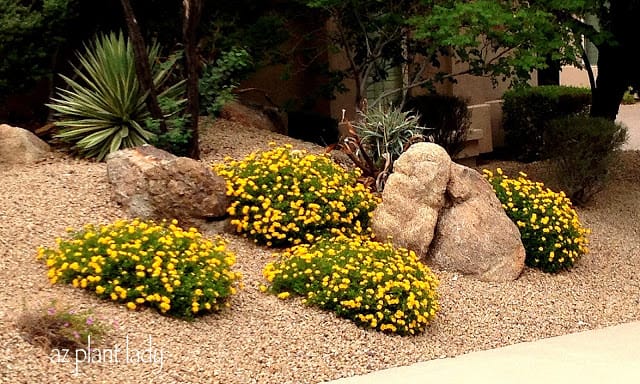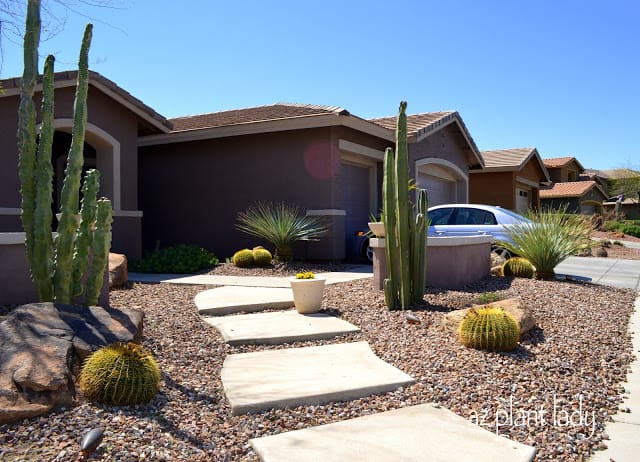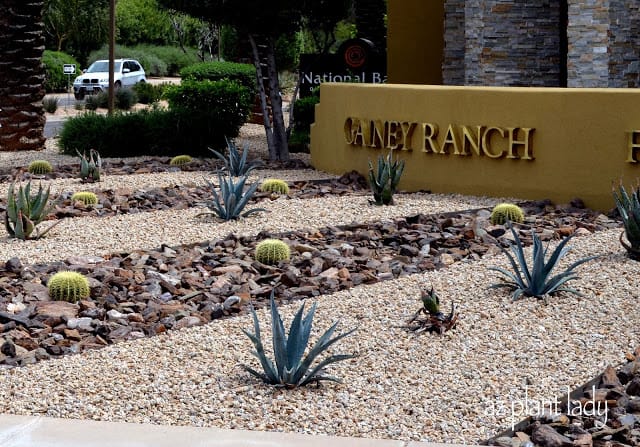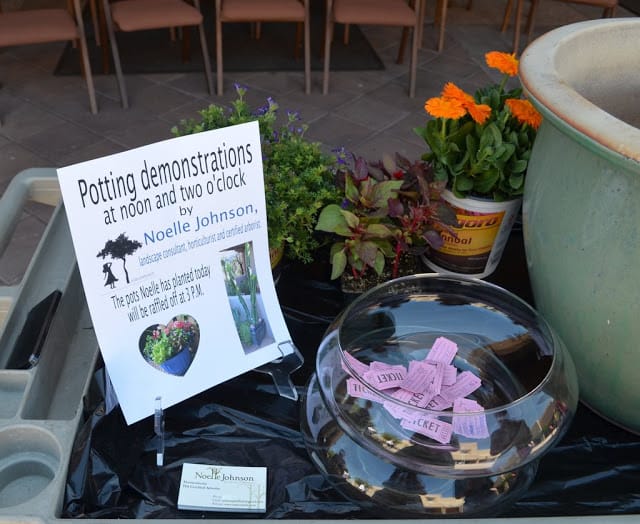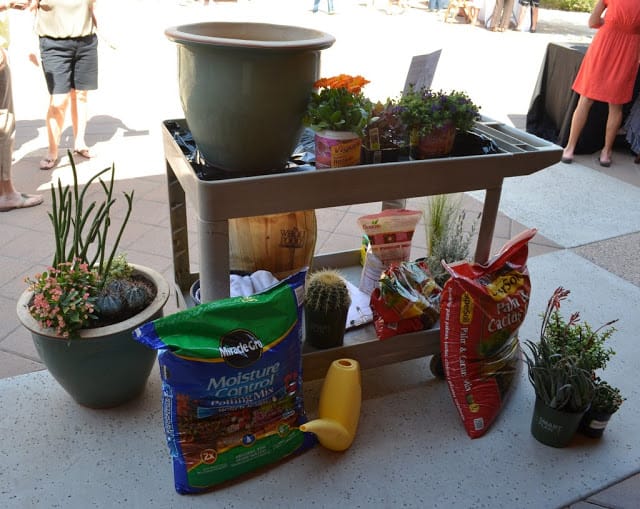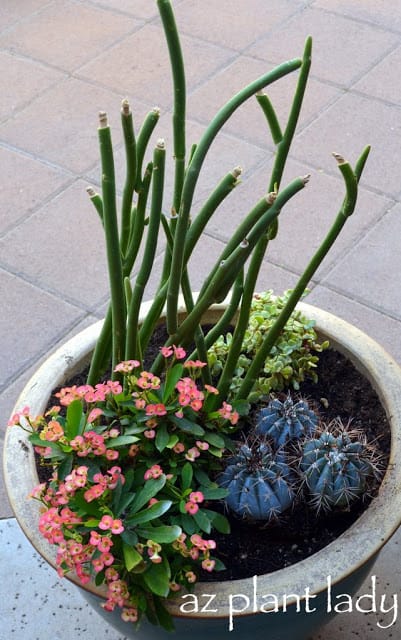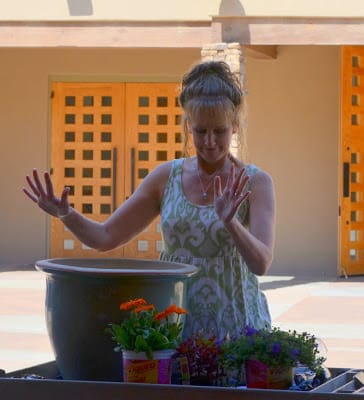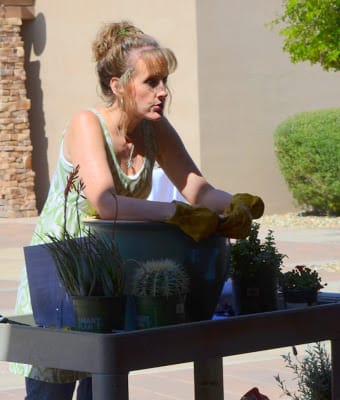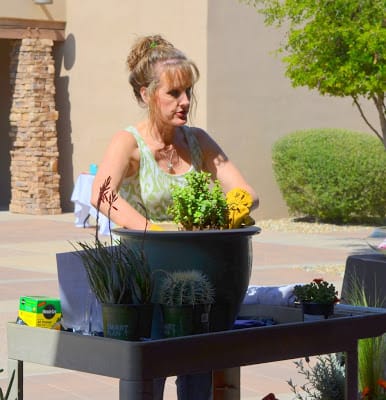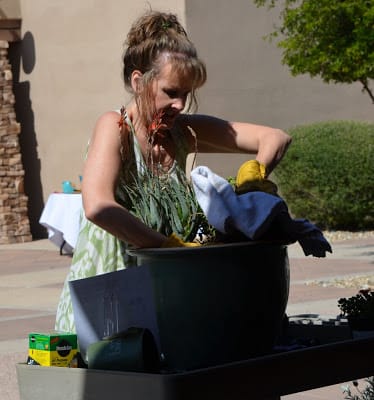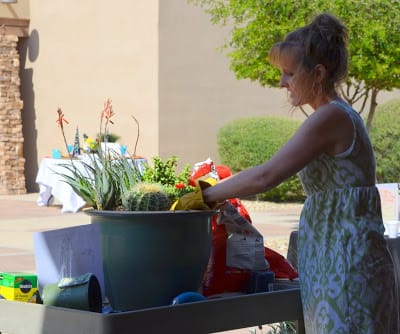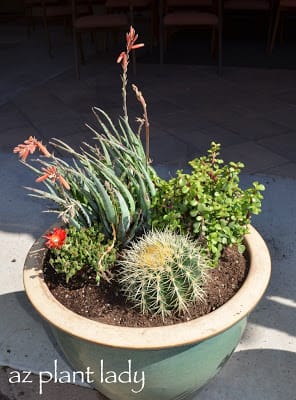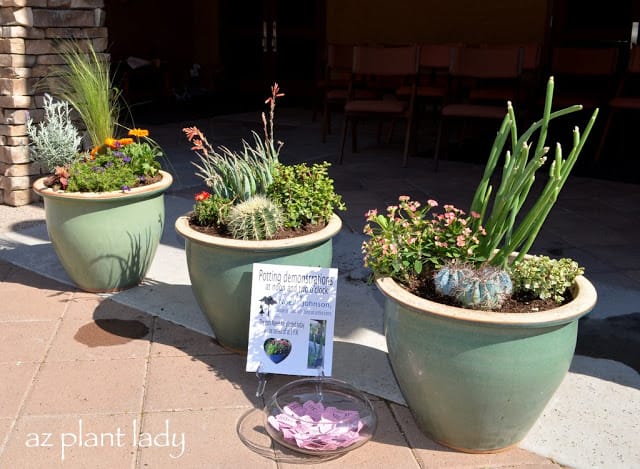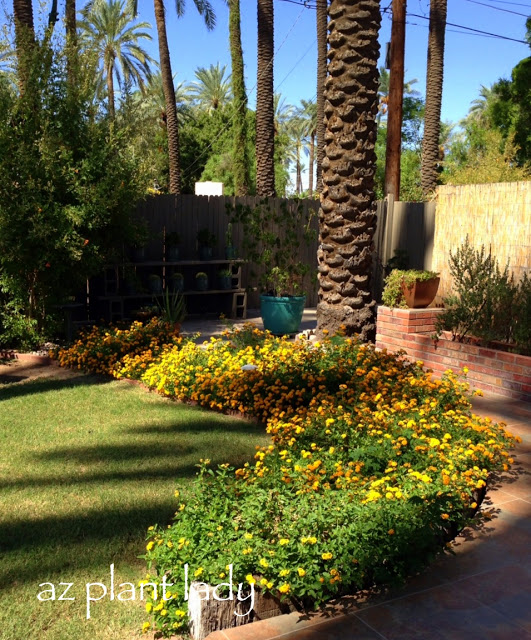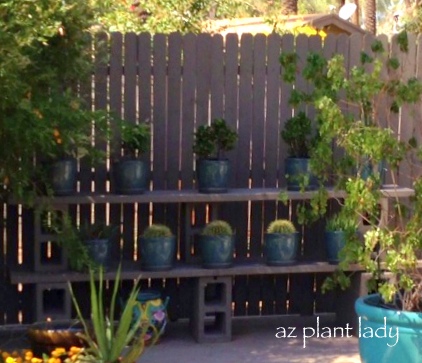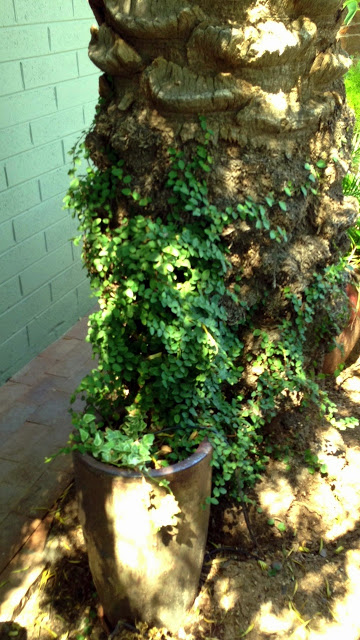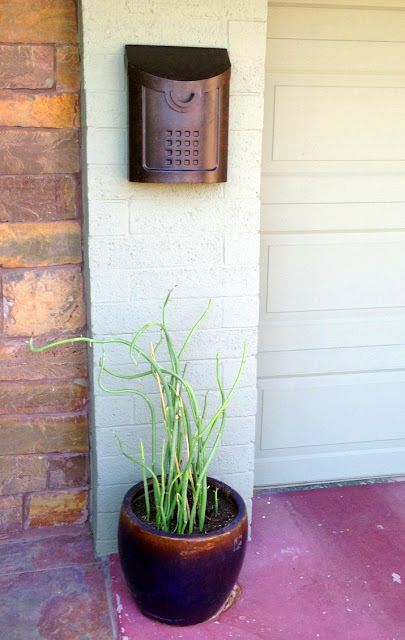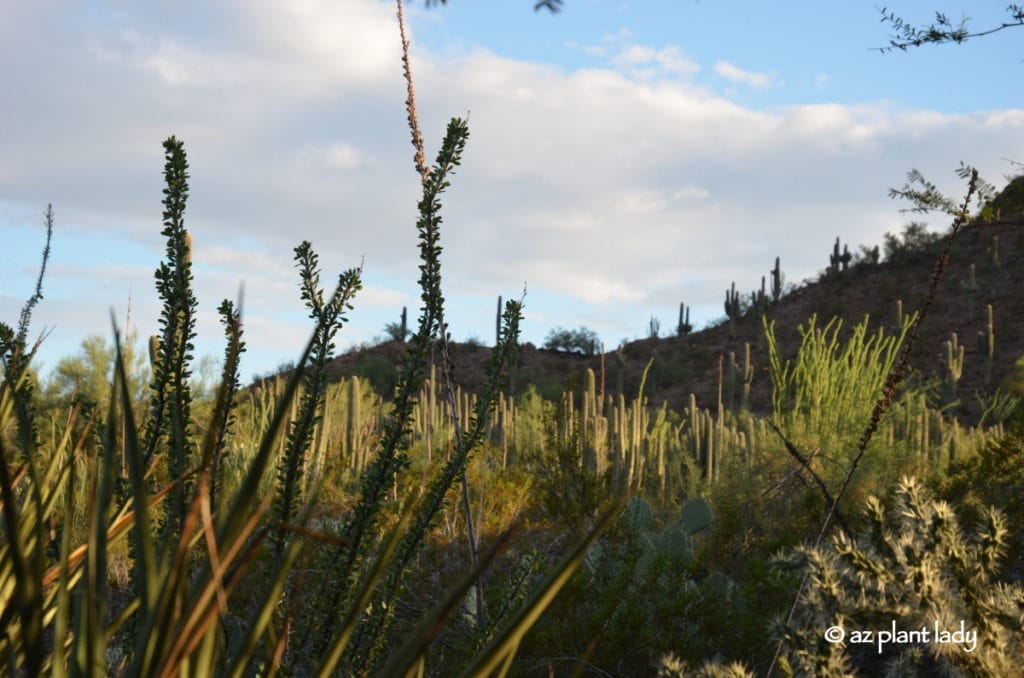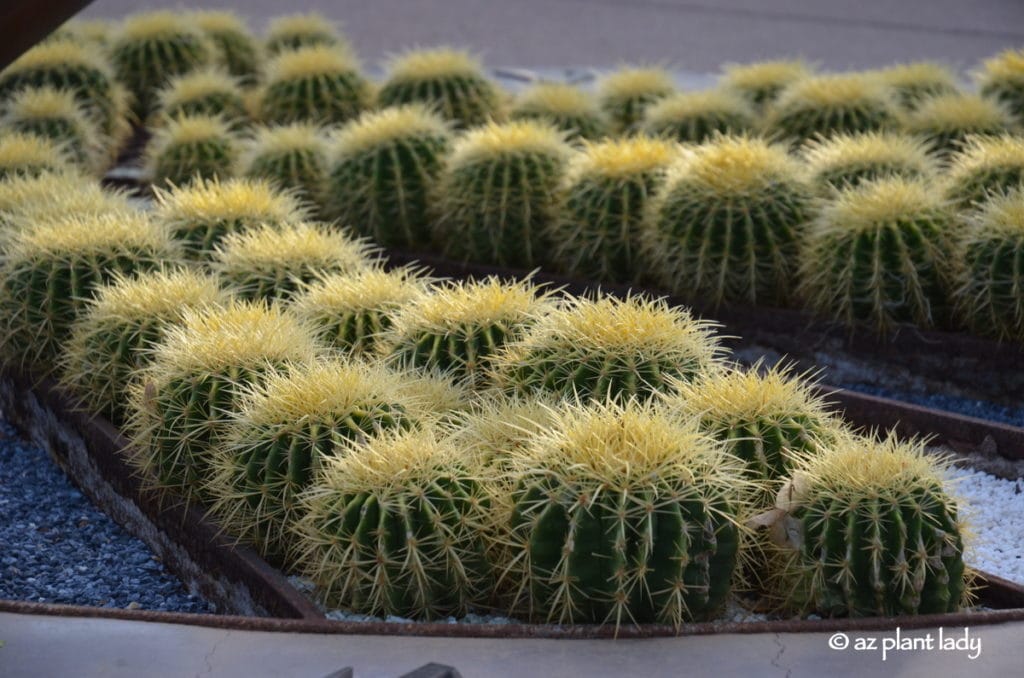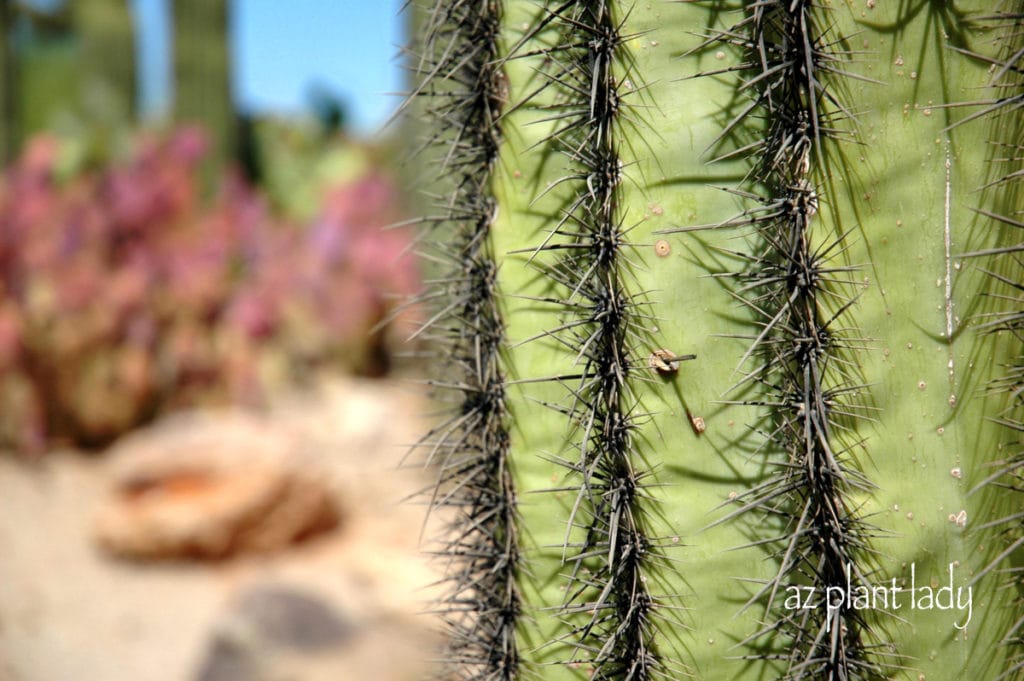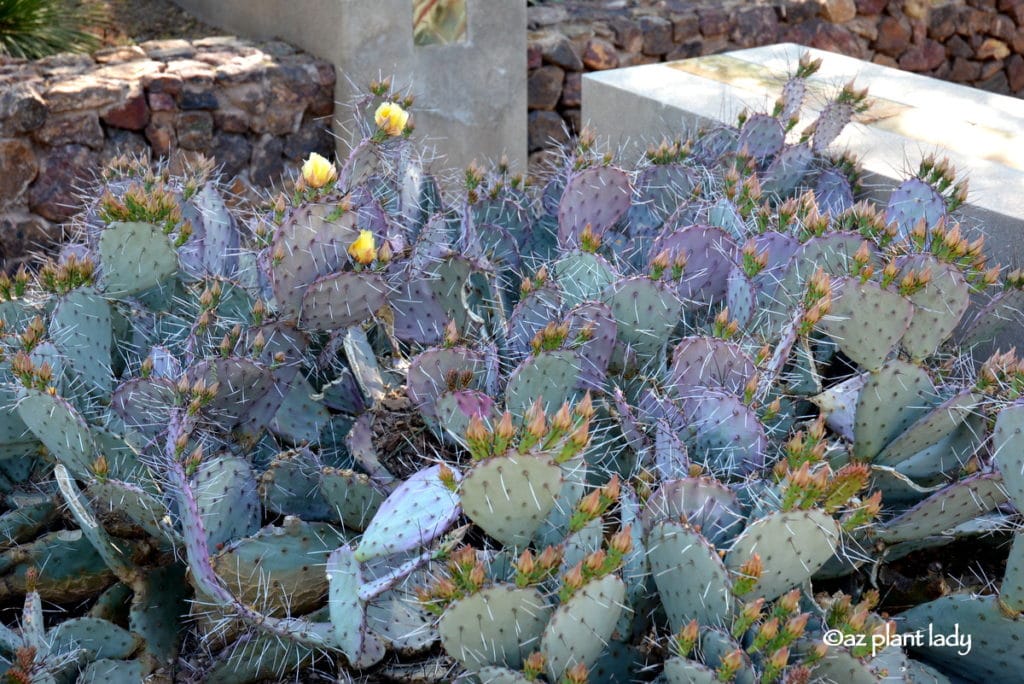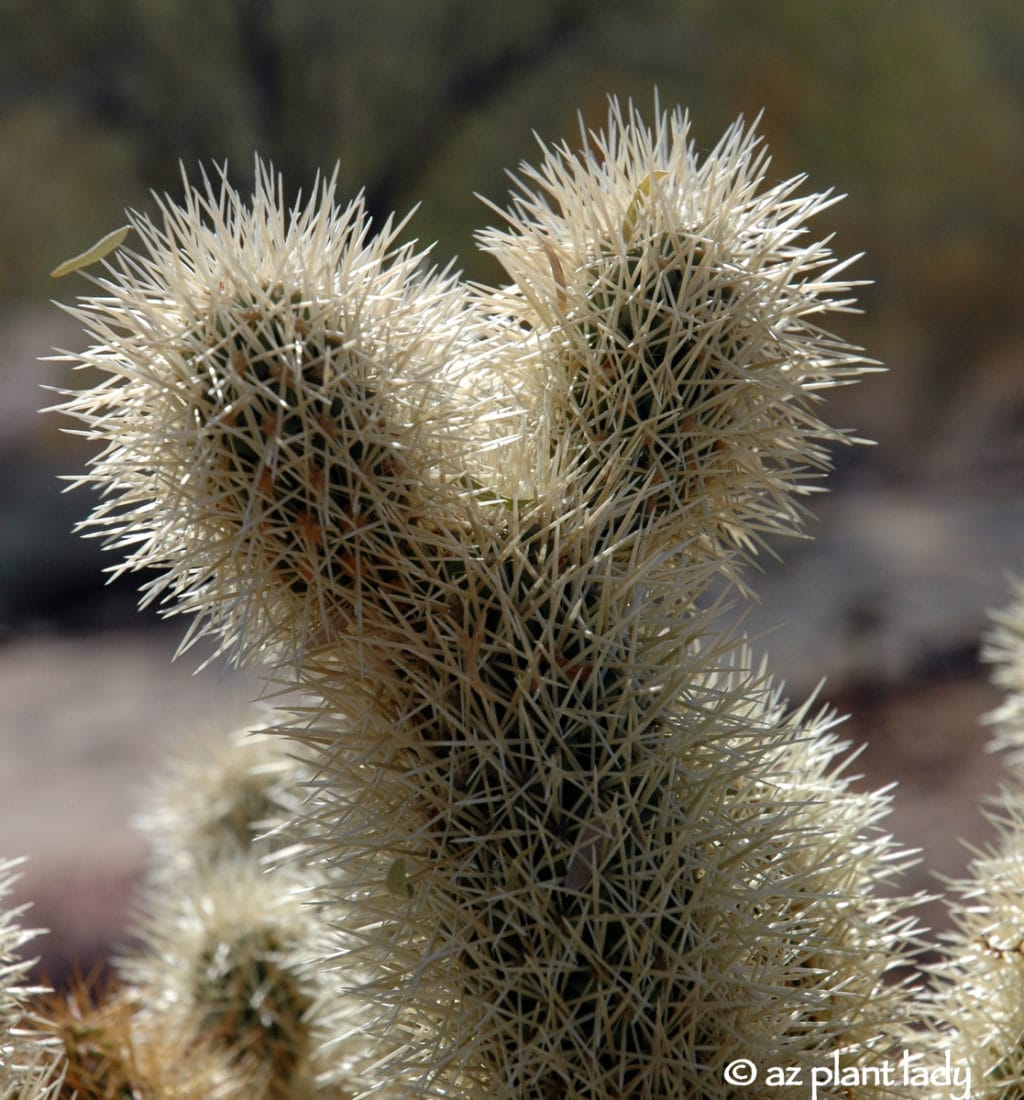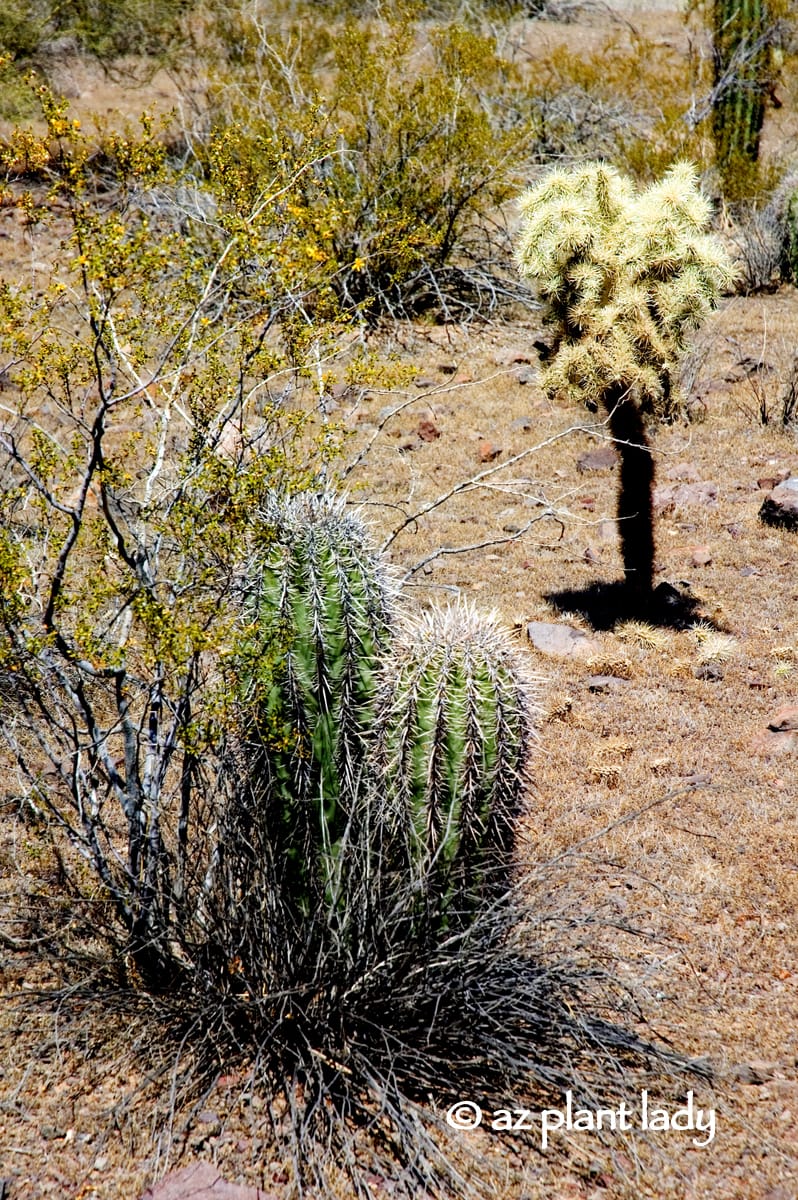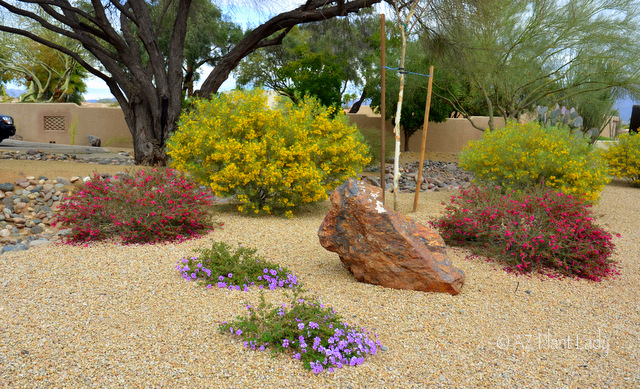
Embracing the Desert’s Winter Palette
One of the delightful aspects of life in the Southwest is the vibrant outdoor spaces, especially during the winter season.
A Break from Landscape Critiques
For those who have been following my blog, you know I often share photos of landscape issues I encounter. But this time, the captivating winter beauty had me so enthralled that I didn’t notice any garden mistakes.
Captivating Winter Wonders
Join me in savoring the beauty of winter in the desert and perhaps find inspiration for your own landscape!
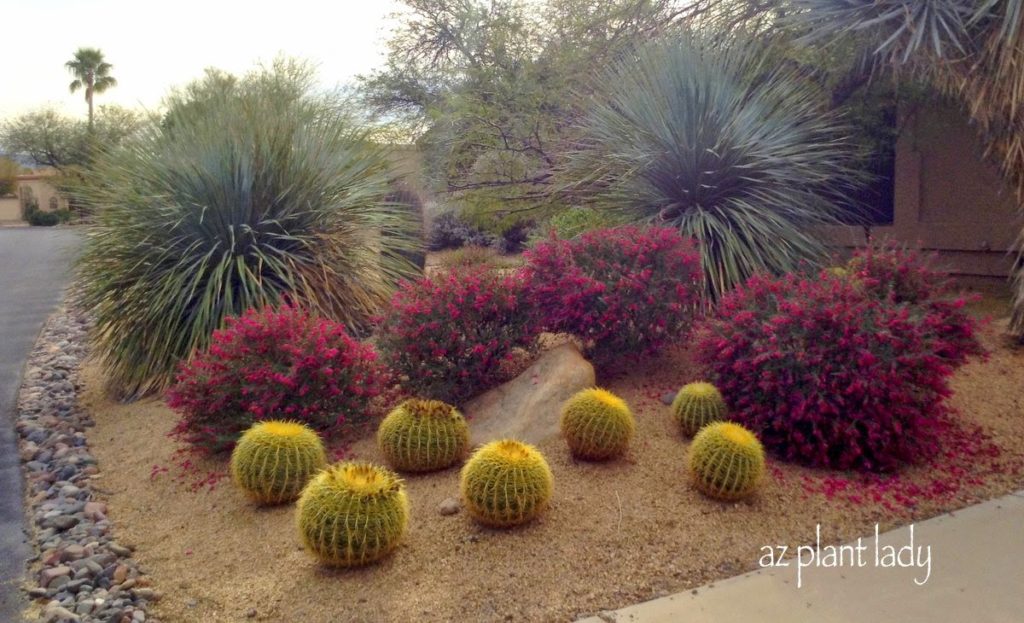
The Stars of the Winter Desert Garden
Valentine Bush (Eremophila maculata ‘Valentine’)
Hands down, my favorite shrub, the vibrant red Valentine Bush adds a burst of color from January through April. Even when not in bloom, its foliage remains attractive.
Golden Barrel Cacti (Echinocactus grusonii)
These sunny yellow cacti are drought-tolerant, low-maintenance, and add a cheerful touch to the garden year-round.
Large Desert Spoon (Dasylirion wheeleri)
With its spiky texture and gray-blue hue, the large desert spoon creates a captivating contrast in the landscape.
This is a great pairing of plants that I plan on using in future designs.
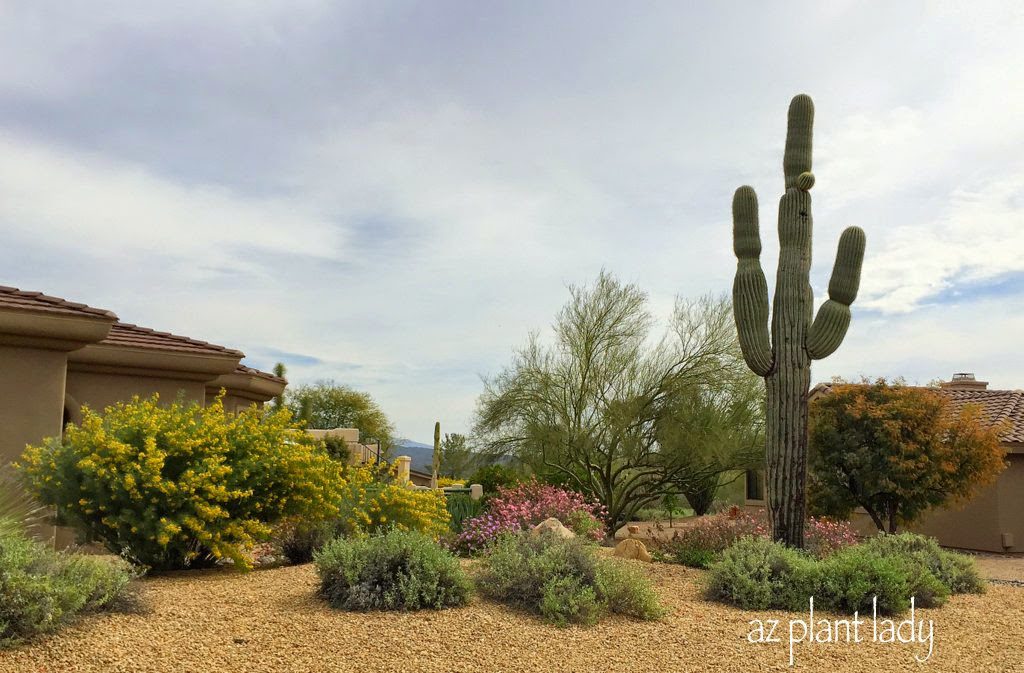
Feathery Cassia (Senna artemisioides)
Bright yellow fragrant flowers of feathery cassia (Senna artemisioides) are famous for their winter color. Nothing else brightens a dreary winter’s day as much as the color yellow. The silvery foliage of this cassia adds great color contrast and give off a silvery glow on a breezy day.
Pink Fairy Duster (Calliandra eriophylla)
In the background, you see the pink blooms of pink fairy duster (Calliandra eriophylla). Their uniquely shaped blooms look like a feather duster and hummingbirds find them irresistible.
Bursage (Ambrosia deltoidea)
This native groundcover provides color contrast and thrives with minimal water.
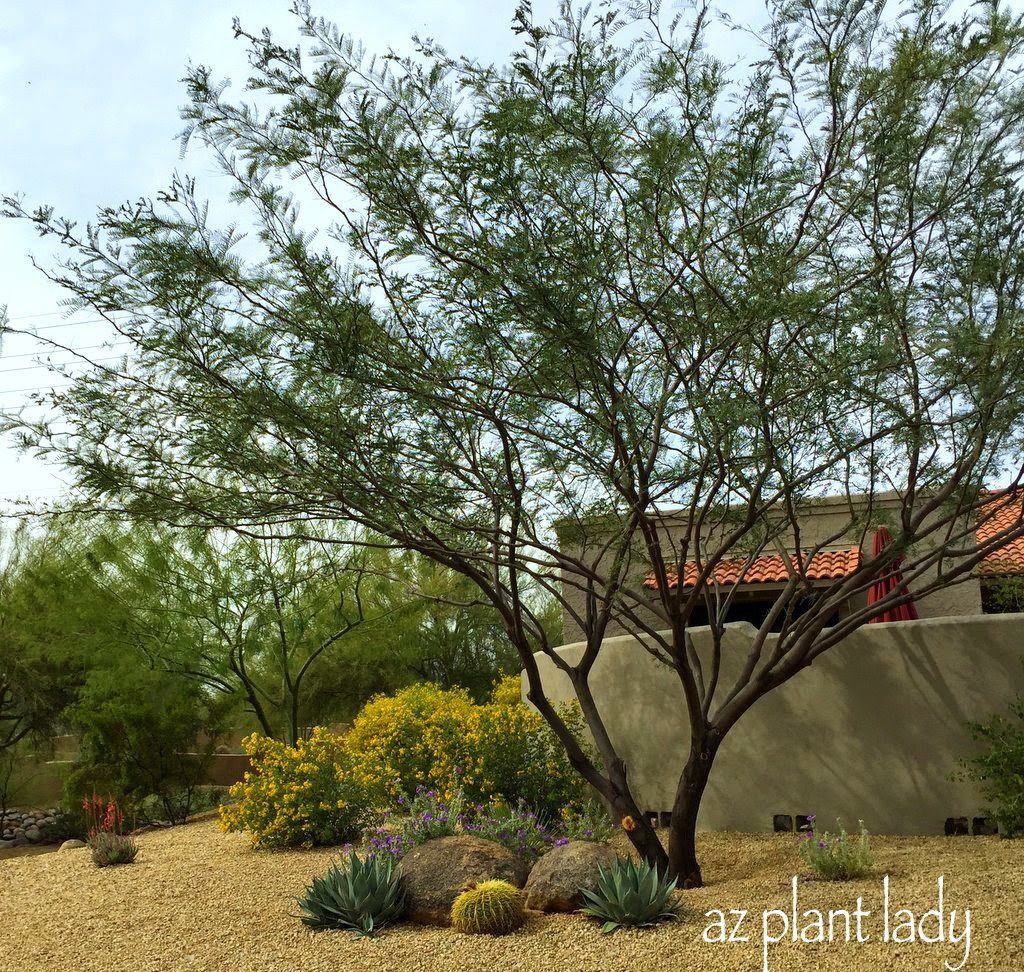
This combination was well done but planted too closely together.
Blue Bells (Eremophila hygrophana)
Against the backdrop of yellow-flowering feathery cassia, a pair of boulders are decorated with blue bells (Eremophila hygrophana). These shrubs have lovely gray foliage and produce purple/blue flowers all year long. This is a newer plant introduction getting a lot of attention.
A golden barrel cactus offers great contrast along with a pair of agave.
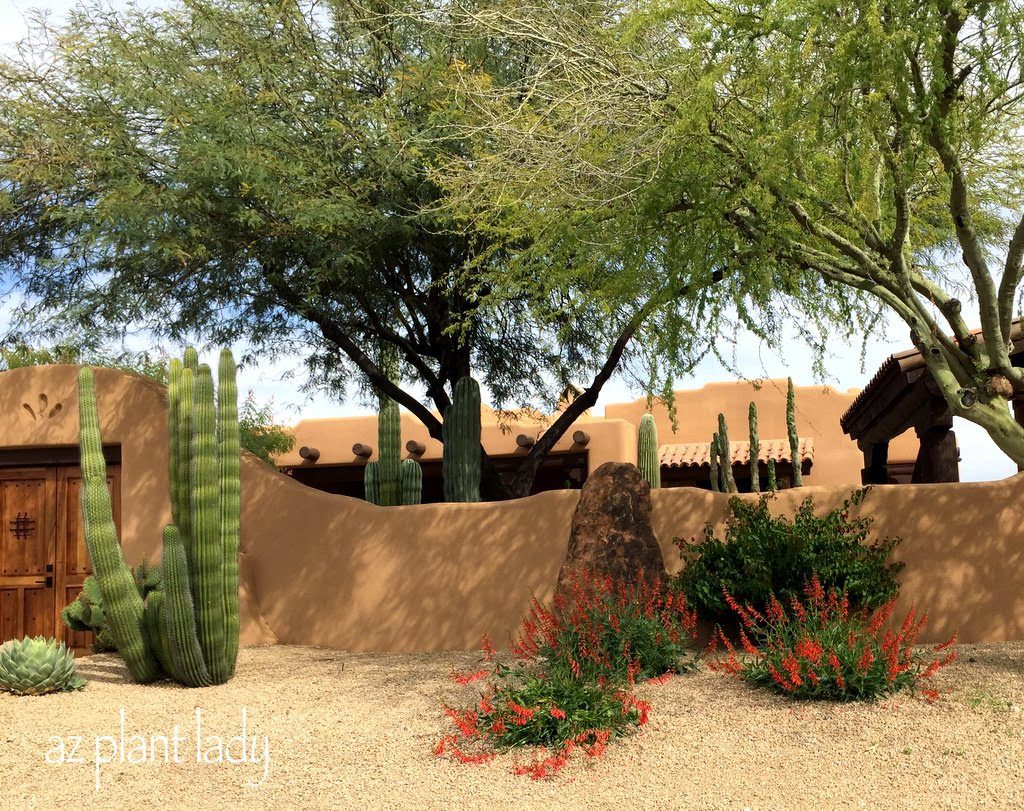
Here is one of my favorite landscapes in this particular community. I like the combination of cacti, flowering shrubs, and perennials that create a pleasing landscape.
Firecracker Penstemon (Penstemon eatoni)
A trio of flowering firecracker penstemon (Penstemon eatoni) easily catches your eye. They are one of my favorite perennials in my own garden and flower January through April in the low desert.
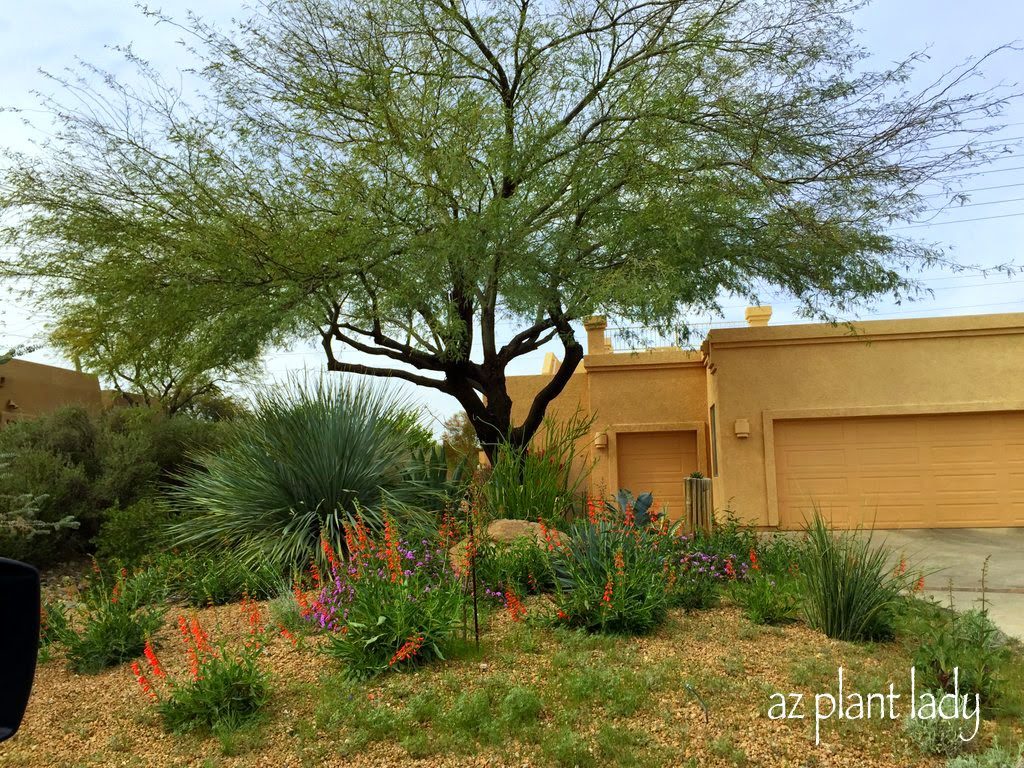
In another landscape, firecracker penstemon is used as part of a wildflower planting, backed by desert spoon and purple trailing lantana.
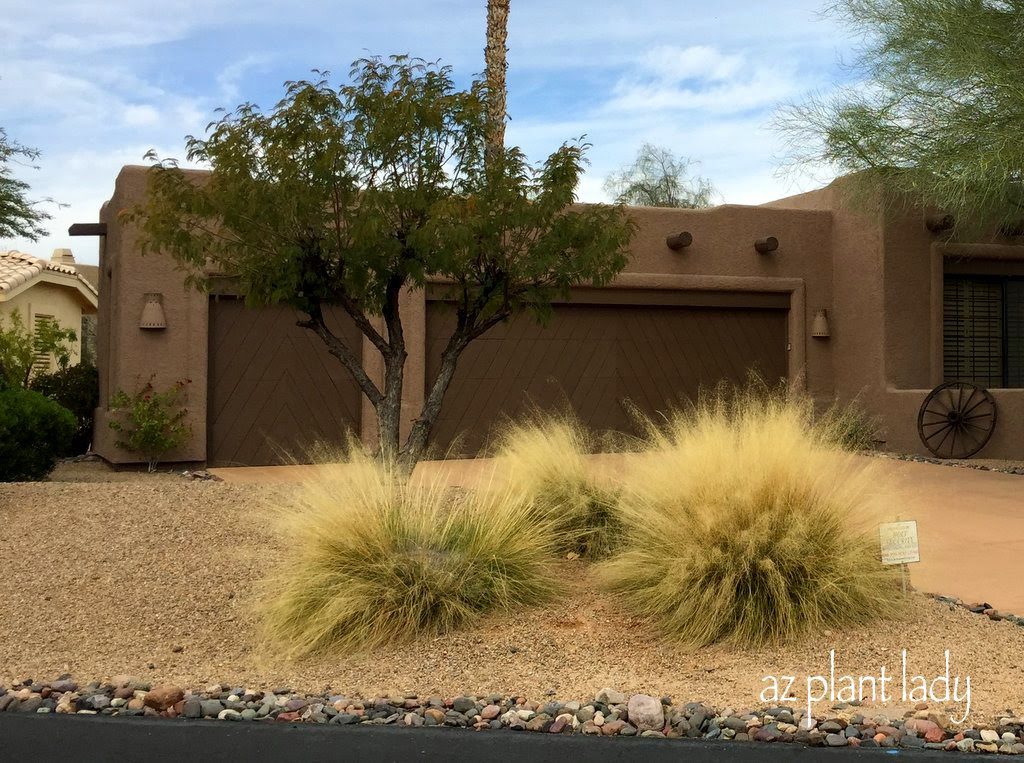
Pink Muhly Grass (Muhlenbergia capillaris)
Ornamental grasses add great interest to the winter landscape and pink muhly (Muhlenbergia capillaris) is one of my favorites. Their burgundy plumes, which appear in fall fade to an attractive wheat color in winter. Soon, they will be pruned back to 3 inches in preparation for a new growth cycle.
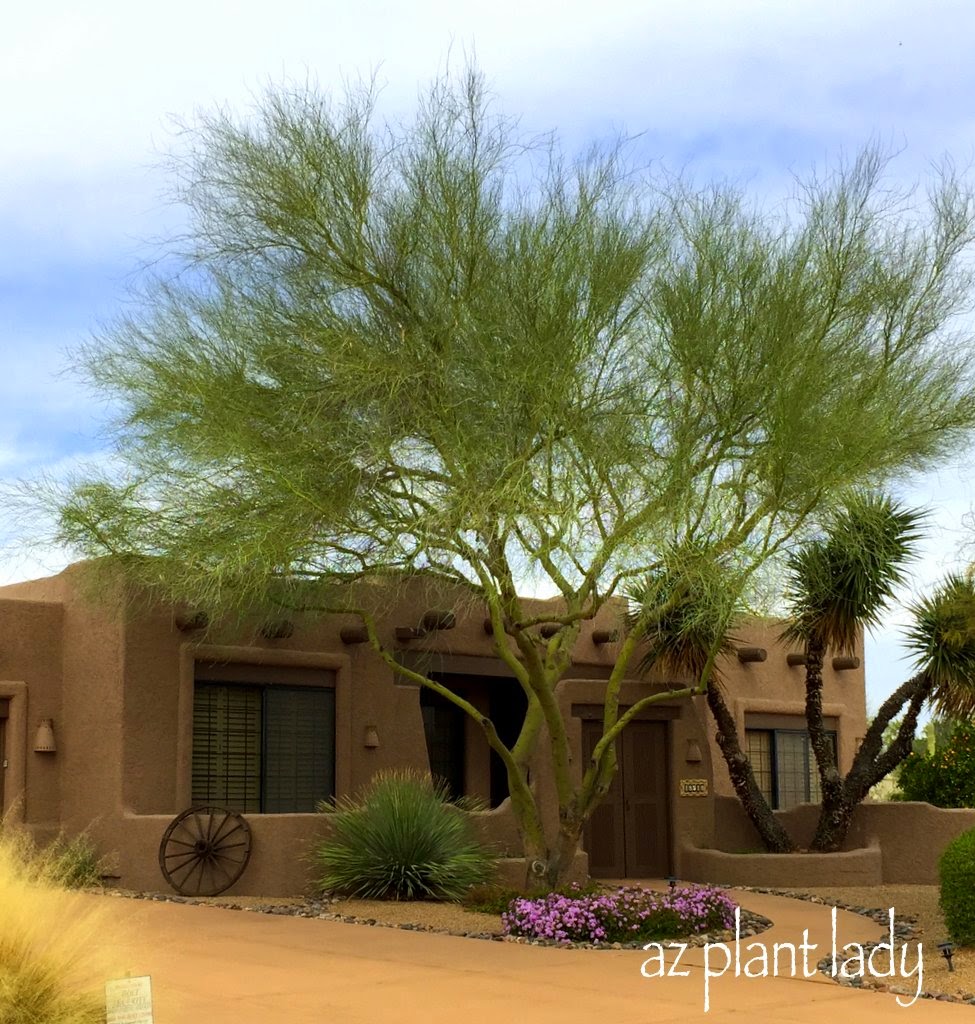
Blue Palo Verde Tree (Parkinsonia florida)
Some landscapes look attractive using a minimum amount of plants. The key is to use a variety of different plants – not just shrubs or cacti. In this one, a blue palo verde (Parkinsonia florida) overlooks a planting of purple trailing lantana (Lantana montevidensis) and desert spoon. While the lantana is frost tender, the canopy of the tree provides it some protection from frost.
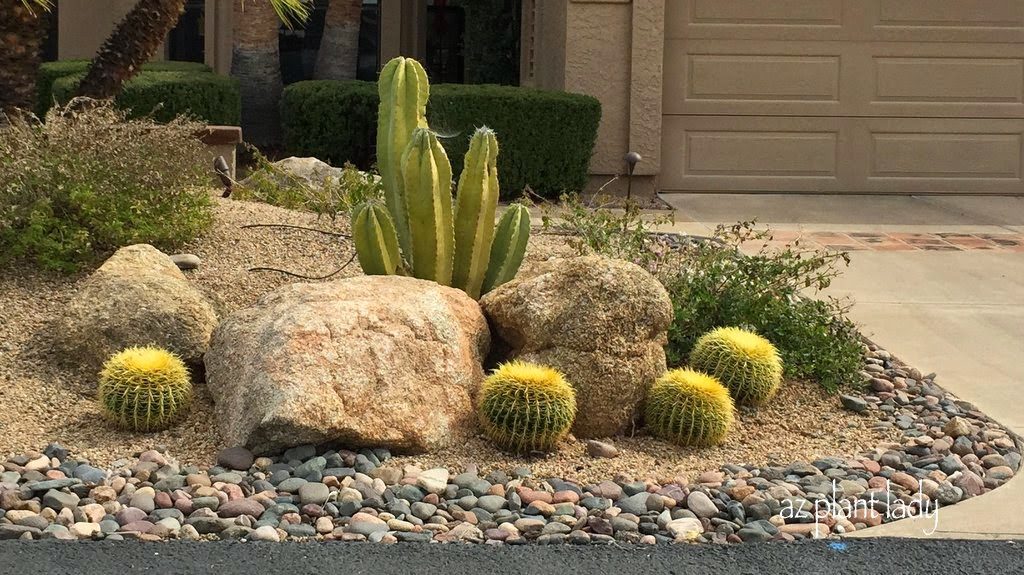
‘New Gold’ Lantana (Lantana ‘New Gold’)
It’s important to anchor the corners in your landscape – particularly those next to the driveway. Here is an example of how to combine plants that look great throughout the year. When warmer temps arrive ‘New Gold’ lantana (Lantana ‘New Gold’), bursts forth with colorful blooms that last until the first frost. In winter, golden barrel cacti attract the attention and keep you from noticing the frost damaged lantana.
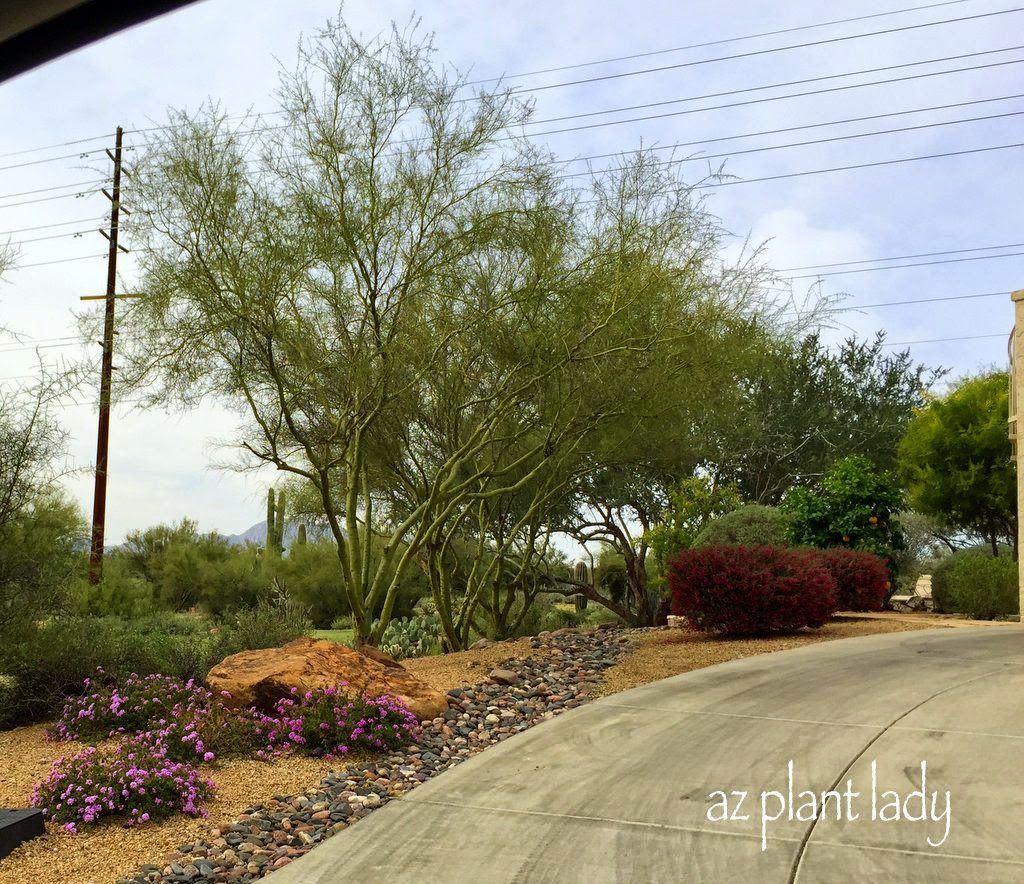
This street planting also attracted my attention with the row of little leaf (foothill) palo verde (Parkinsonia microphylla) trees, Valentine shrubs and purple trailing lantana. I should note that lantana doesn’t usually flower much in winter, but in mild winters, they do.
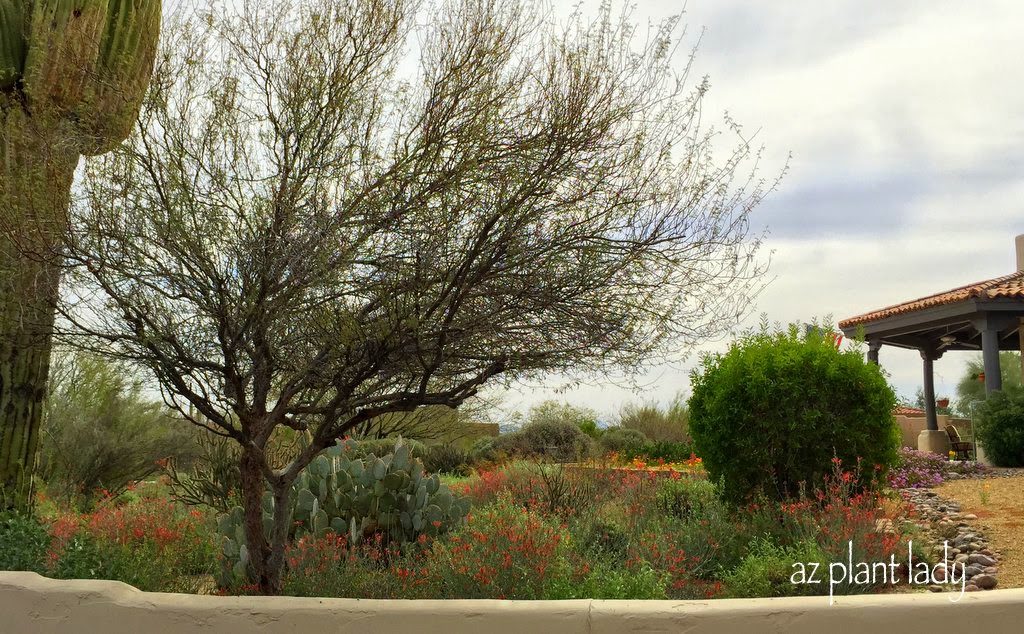
Chuparosa (Justicia californica)
An almost leafless mesquite tree stands sentinel over a planting of red-flowering chuparosa (Justicia californica). This shrub has lovely green foliage and tubular flowers that drive hummingbirds crazy with delight.
Adding Cool-Season Beauties to Your Landscape
s you can see, the Southwestern landscape is filled with beauty and color, even in winter. Unfortunately, many homeowners tend to focus on plants that primarily bloom during the spring and summer months. While these choices can create stunning gardens during warmer seasons, they often leave gardens looking somewhat lackluster during the winter months.
Winter gardening in the Southwest offers a unique opportunity to infuse your landscape with captivating colors and textures, providing a visual treat even when the temperatures drop. By incorporating cool-season beauties like the vibrant Valentine Bush, cheery Golden Barrel Cacti, and the elegant Firecracker Penstemon, you can ensure that your garden remains a source of joy throughout the year.
Embracing winter-friendly plants doesn’t mean sacrificing the visual appeal of your landscape during the colder months. Instead, it allows you to celebrate the unique beauty that the winter season brings to the desert garden. So, why not take this opportunity to diversify your garden’s plant palette and create a lively and colorful outdoor space that shines year-round? By doing so, you can revel in the splendor of your Southwestern garden, no matter the season.


